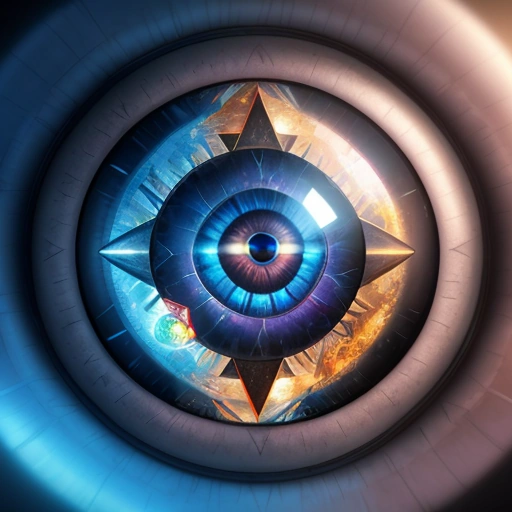Found it: https://www.youtube.com/watch?v=45CvTHmt_dI
This is why I prefer it when people specify what kind of “AI” they’re talking about rather than just saying “AI” as a buzzword. I definitely agree with Derbauer here… this is painful.
Found it: https://www.youtube.com/watch?v=45CvTHmt_dI
This is why I prefer it when people specify what kind of “AI” they’re talking about rather than just saying “AI” as a buzzword. I definitely agree with Derbauer here… this is painful.
Great video, he breaks everything down really well…
I might have to start linking to this video rather than trying explain what AI is vs what AI isn’t to those who like to make general statements like “AI is a scam!”.


Getting away from Google Maps has been a tough one. There aren’t many options there, it’s either Google, Apple, Microsoft, or OpenStreetMap.
I’ve been contributing to OSM for my local area as much as possible to update businesses and their opening hours, website, etc., but it’s not a small task.


SD? SD 3? The weights? All the above?
Stable Diffusion is an open source image generating machine learning model (similar to Midjourney).
Stable Diffusion 3 is the next major version of the model and, in a lot of ways, it looks better to work with than what we currently have. However, up until recently we were wondering if we would even get the model since Stability AI ran out of funding and they’re in the midst of being sold off.
The “weights” refer to the values that make up the neural network. Basically by releasing the weights they are essentially saying that they are making the model open-source so that the community can retrain/fine-tune the model as much as we want.
They made a wait list for those who are interested in getting notified once the model is released, and they turned it into a pun by calling it a “weights list”.


Correction: “Weight List” ;)


Sure, but this is just a more visual example of how compression using an ML model can work.
The time you spend reworking the prompt, or tweaking the steps/cfg/etc. is outside of the scope of this example.
And if we’re really talking about creating a good pic it helps to use tools like control net/inpainting/etc… which could still be communicated to the receiving machine, but then you’re starting to lose out on some of the compression by a factor of about 1KB for every additional additional time you need to run the model to get the correct picture.


A job interview! (I wish I was joking).
The reward for developing this miraculous leap forward in technology? A job interview, according to Neuralink employee Bliss Chapman. There is no mention of monetary compensation on the web page.


You also have to keep in mind that, the more you compress something, the more processing power you’re going to need.
Whatever compression algorithm that is proposed will also need to be able to handle the data in real-time and at low-power.
But you are correct that compression beyond 200x is absolutely achievable.
A more visual example of compression could be something like one of the Stable Diffusion AI/ML models. The model may only be a few Gigabytes, but you could generate an insane amount of images that go well beyond that initial model size. And as long as someone else is using the same model/input/seed they can also generate the exact same image as someone else. So instead of having to transmit the entire 4k image itself, you just have to tell them the prompt, along with a few variables (the seed, the CFG Scale, the # of steps, etc) and they can generate the entire 4k image on their own machine that looks exactly the same as the one you generated on your machine.
So basically, for only a few bits about a kilobyte, you can get 20+MB worth of data transmitted in this way. The drawback is that you need a powerful computer and a lot of energy to regenerate those images, which brings us back to the problem of making this data conveyed in real-time while using low-power.
Edit:
For transmitting the information to generate that image, you would need about 1KB to allow for 1k characters in the prompt (if you really even need that),
then about 2 bytes for the height,
2 for the width,
8 bytes for the seed,
less than a byte for the CFG and the Steps (but we’ll just round up to 2 bytes).
Then, you would want something better than just a parity bit for ensuring the message is transmitted correctly, so let’s throw on a 32 or 64 byte hash at the end…
That still only puts us a little over 1KB (1078Bytes)…
So for generating a 4k image (.PNG file) we get ~24MB worth of lossless decompression.
That’s 24,000,000 Bytes which gives us roughly a compression of about 20,000x
But of course, that’s still going to take time to decompress as well as a decent spike in power consumption for about 30-60+ seconds (depending on hardware) which is far from anything “real-time”.
Of course you could also be generating 8k images instead of 4k images… I’m not really stressing this idea to it’s full potential by any means.
So in the end you get compression at a factor of more than 20,000x for using a method like this, but it won’t be for low power or anywhere near “real-time”.


Shout-out to Archive.org for all the awesome work they do to backup what they can from the internet.
(Especially when some stack overflow answer to a question is just a link to some website that has either changed or no longer exists).


Sure, but the problem is that our language has evolved and “AI” no longer means what it used to.
Over a decade ago it was mostly reserved for what you’re describing (which I would call “AGI” now). However, even then we did technically use “AI” for things like NPCs in video games. That kind of AI just boils down to a bunch of If-Then statements.


I think any time “AI” is involved, journalists should be much more specific about what exactly they’re talking about. LLMs, Computer Vision, Generative models (text/image/audio), Upscaling (can start to get a little muddy here between upscaling and generative models depending on how this is implemented), TTS, STT, etc…
I definitely agree that “AI” has been abused into the definition it is now. Over a decade ago “AI” was mostly reserved for what we have to call “AGI” now.


Sure, but don’t let that feed into the sentiment that AI = scams. It’s way too broad of a term that covers a ton of different applications (that already work) to be used in that way.
And there are plenty of popular commercial AI products out there that work as well, so trying to say that “pretty much everything that’s commercial AI is a scam” is also inaccurate.
We have:
Suno’s music generation
NVidia’s upscaling
Midjourney’s Image Generation
OpenAI’s ChatGPT
Etc.
So instead of trying to tear down everything and anything “AI”, we should probably just point out that startups using a lot of buzzwords (like “AI”) should be treated with a healthy dose of skepticism, until they can prove their product in a live environment.


If you think that “pretty much everything AI is a scam”, then you’re either setting your expectations way too high, or you’re only looking at startups trying to get the attention of investors.
There are plenty of AI models out there today that are open source and can be used for a number of purposes: Generating images (stable diffusion), transcribing audio (whisper), audio generation, object detection, upscaling, downscaling, etc.
Part of the problem might be with how you define AI… It’s way more broad of a term than what I think you’re trying to convey.


I’m just glad to hear that they’re working on a way for us to run these models locally rather than forcing a connection to their servers…
Even if I would rather run my own models, at the very least this incentivizes Intel and AMD to start implementing NPUs (or maybe we’ll actually see plans for consumer grade GPUs with more than 24GB of VRAM?).


Just wait till someone creates a manically depressed chatbot and names it Marvin.


It’s worth pointing out that once Pokémon Go players found out about OSM, we saw a massive increase in new users as well as those contributing to OSM so that the maps would better reflect the areas they played in.
https://www.researchgate.net/publication/334378297_How_an_augmented_reality_game_Pokemon_GO_affected_volunteer_contributions_to_OpenStreetMap
Unfortunately there are always a few that will try to game any system. In this case they’re essentially vandalizing OSM for their own selfish reasons.


Always support your public libraries, and watch out for companies that want to take this over:
https://fair.org/home/a-for-profit-company-is-trying-to-privatize-as-many-public-libraries-as-they-can/
Or GrayJay on Android.


From the official OIG website:
HHS-OIG has authority under 1128(a) of the Social Security Act to exclude from participation in Medicare, Medicaid and other Federal health care programs individuals who have been convicted of certain crimes, including criminal offenses related to health care fraud. An exclusion is an administrative sanction that protects Federal health care programs and the people they serve by prohibiting payment for any health care item or service furnished, ordered, or prescribed by an excluded person.
I could see it argued both ways. It looks like this is meant to prohibit her from working with or receiving payment from any group in this sector.
From the wording it’s difficult to tell if this means she also won’t be able to be reimbursed for her own personal healthcare costs by any of these programs.
And if anyone really wants to get into the legalese: https://www.ssa.gov/OP_Home/ssact/title11/1128.htm
Most of that just looks like carpet shading, where rubbing the carpet one way looks darker compared to rubbing it the other way. http://carpetswalltowall.com/shading-footprints-pooling/
However, the brown stain on the far right definitely stands out.